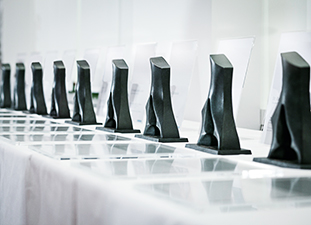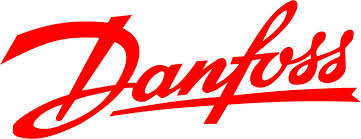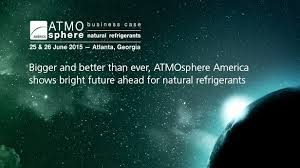Using Fuel Cell Energy Technology on a grand scale
SOUTH KOREA –Interest in fuel cell energy is growing in markets where the large-scale development of green energy is desired, but the space for solar or wind farms is limited. The most recent development is the largest and most powerful energy fuel cell park in the world in Hwasung City, South Korea.
South Korea is an energy intensive country with high urban population density and little land available. In the wake of a scandal involving falsified security certificates for nuclear power plants, the nation is seeking to reduce its dependence on nuclear power to a level of 29% of its energy mix by 2035.
Due to a lack of local resources, imported fuels currently fulfill about 97% of South Korea’s energy requirements. In 2013, the country was the world’s second largest importer of liquefied natural gas (LNG), the fourth largest coal importer and the fifth largest oil importer.
With a view to cleaning its energy mix, South Korea has set up a green growth policy since 2008 to increase its use of renewable energy to 20% of total production in 2027. In its environment policy of renewable energy sources, the nation suggests a renewable heat obligation and a renewable portfolio standard.
However, the terrain of South Korea is rugged and is not particularly suited to large solar farms and wind turbines. In recent years, South Korea has shown a growing interest in the power of the fuel cell energy, with a number of projects in the pipeline.
In February, the independent power producer POSCO ENERGY, a South Korean business partner, installed the largest fuel cell plant in the world. The 59 megawatts (MW) Green Energy Park of Gyeonggi, in the city of Hwasung in South Korea uses FuelCell Energy technology. Tony Leo, vice president of FuelCell ENERGY for applications and the development of advanced technology, held talks with Kurt Goddard, vice president of investor relations, concerning Gyeonggi and about the consistency of fuel cell energy. They also discussed research and development and market prospects and the company’s plans for the future.
How does a fuel cell power plant work ?
Fuel cells convert chemical energy from fuels rich in hydrogen to electrical energy and heat in a low emission electrochemical process.
Similar to a battery, a fuel cell is composed of many individual cells grouped together to form what is called a stack of fuel cells. Each cell contains an anode, a cathode and a further electrolyte. When a hydrogen rich fuel such as natural gas or biogas enters the fuel cell stack it generates an electrochemical reaction with oxygen and produces electricity, heat and water.
However, unlike a battery which has a fixed power supply and can be discharged, the fuel cell can generate electricity as long as fuel is supplied.
FuelCell Energy’s direct fuel cell plant is based on carbonate fuel cell technology wherein the electrolyte comprises potassium carbonate and lithium. Carbonate fuel cells generate hydrogen from multiple fuel sources in a process called internal reforming as patented by Fuel Cell Energy. The company says that this process provides a competitive advantage because it uses readily available fuel. Since there is no fuel combustion, power generation hardly emits any NOx or SOx particles.
The cell of a fuel cell is located within the fuel stack or a module containing several stacks for power plants of several megawatts. The incoming fuel is treated by the mechanical balance of the plant, whereas the electrical output is generated by the electrical balance of the plant.
Building Gyeonggi
The 59 MW plant in Gyeonggi is considerably larger than the second largest stack fuel cell park, the 14.9 MW plant in Bridgeport, Connecticut, USA which was also developed by FuelCell Energy. POSCO Energy is currently building a third 19.6 MW fuel cell park in Seoul.
The LNG Gyeonggi plant provides continuous base energy to the town of Hwasung CITY. Its 21 Direct Fuel Cell (DFC3000) base units are estimated at 2.8 MW each and are installed in a 2 hectare area. Due to their small size, FuelCell Energy plants can be easily installed and located in appropriate sites according to declarations made by Mr. Goddard.
“An intermittent solar plant would need about 10 times the land we do,” added Leo. “In South Korea, where there’s high urban population density, we take up only five acres in an industrial area for almost 60 MW of continuous baseload power.”
Posco Energy completed construction on the plant in only 14 months. “For a project of this size, such a short construction time is a testament to how smoothly it was done,” Leo said, “compared to conventional power plants where it takes that long just to get the permit.”
The necessary construction permit was obtained very rapidly as Mr Leo explained, since “It’s specific to this technology,” he said, “and it’s the same in California and many other US states. Because fuel cell technology is recognized as emitting virtually no harmful pollutants, we can bypass the air and pollution permitting which is required for a power plant of that size.”
Likewise the plant construction posed no untoward problems according to Mr Leo “Because we’re constructing 21 of the same unit, it’s a relatively straightforward construction process. Instead of 21 separate mobilizations, there are fewer in terms of cranes and such.”
Interconnection of the 21 units was “a little more tricky than a single unit”, he continued, but didn’t present any particular problems and was “just something we needed to work through in engineering terms.”
This interconnection of fuel cell stacks was a major advantage, making the project “very different from trying to install one big 59 MW system,” Leo added. Gyeonggi is “bigger than what we’ve done before, but hopefully will become typical,” he said before concluding “In the grand scheme of power plants, it’s not that big.”
The use of heat
The efficiency of the fuel cell power plant – in the case of Gyeonggi around 47%, can be improved by using the waste heat of fuel cells in other applications such as industrial processes or heating installation and cooling. Although this is “not always possible in systems of this size”, as Goddard explained “In our 14.9 MW project in Connecticut we couldn’t find a user for the excess heat, so we take the waste heat from the fuel cell and make more electricity in a bottoming cycle.”
However, Hwasung City has a district heating system, to which the Gyeonggi plant now contributes by providing 20 to 30 MW of thermal energy “We recover heat from all 21 units’ exhausts,” said Goddard, explaining that there is a waste heat recovery system atop each fuel cell power plant’s main equipment section which transfers heat to a hot water loop and from there onward to the district heating network. While district heating systems are not yet common in the US, continued Goddard, “Once you get outside the US and into areas with district heating and cooling, there are interesting options” for excess heat use.
Local Manufacturing
South Korea aims to expand its local manufacturing base, and the manufacture of clean energy is intended to be a driver for the nation’s growth over the next 10 years.
While the FuelCell Energy components are currently manufactured in Connecticut, POSCO Energy, a subsidiary of the fourth largest steel company in the world, is currently building a manufacturing plant for fuel cell components in Pohang, which should start operations in 2015.
“They’re doing it under license to us,” Goddard explained, “but it’s for them and their marketplace, although we can source components out of that. We initially licensed the balance of plant technology, and a few years ago they started manufacturing heat exchangers and so forth – everything but the fuel cell stack modules. They’re already doing final assembly of fuel cell stacks, and in a couple of years they will be able to manufacture the cells themselves.
“For us this is a royalty stream, but also a second source of supply,” Leo said. “And for some of our customers, the fact that there’s a second source for key fuel cell components is comforting.”
“They’re doing it under license to us,” Goddard clarified “but it’s for them and their marketplace, although we can source components out of that. We initially licensed the balance of plant technology, and a few years ago they started manufacturing heat exchangers and so forth – everything but the fuel cell stack modules. They’re already doing final assembly of fuel cell stacks, and in a couple of years they will be able to manufacture the cells themselves.
“For us this is a royalty stream, but also a second source of supply,” Leo stated. “And for some of our customers, the fact that there’s a second source for key fuel cell components is comforting.”
R & D
The company is working on improving its current technology. “One of those 21 DFC3000 power plants in South Korea generates 2.8 MW, and you have to change the fuel cell stacks every five years,” said Goddard. “We’re developing improvements to the cell technology to increase output to 3 MW and increase the stack life from five to seven years.
“We’ve done this before,” he added. “When we first started selling cells commercially, a DFC3000 would produce 2 MW, then 2.4 MW, then 2.8 MW. It’s been a general evolution and refinement of the carbonate technology.”
“We’re also looking at ways to develop new products from carbonate – for example, we’re developing a product that also produces hydrogen in addition to electricity and heat,” commented Mr Leo. Theproduct convertsnatural gas into hydrogeninsidethe fuel cell stack,resulting in purehydrogenfor usein industrial processesor hydrogenvehicle stations.
The company has a Californian demonstration project and others currently being built in Connecticut and Canada.
Another project, supported by the US Department of Energy, uses fuel cells to capture carbon dioxide. Mr. LEO says: “Carbonate fuel cells have a carbon cycle inside them. If you send CO2 into the air intake, it gets transferred to fuel gas and you can easily separate it out.”
FuelCell Energy is also hard at work on developing a next generation of fuel cells based on solid oxide technology, “an interesting option for smaller-sized power plants,” according to Leo.
“Solid oxide is more efficient because of the way electrodes work – but it’s difficult to make the cells very large. A single cell in a carbonate power plant is 9000 cm2 in area – but no one knows how to make solid oxide cells that big; the ones we make now are 600 cm2.
“We’ve scaled up more than anyone,” he said. “We hope to enter the market in a couple of years with sub-megawatt products. And the US government is funding us for solid oxide because they think that, in the long term, it’s good for power plants running on coal gas, and we agree.”
Competition
Several other fuel cell companies are active in FUELCELL ENERGY’s target markets. BLOOM ENERGY, based in CALIFORNIA, uses solid oxide fuel cells in its 200kW ENERGYSERVER plants and has installed systems in TOKYO and also in CALIFORNIA and CONNECTICUT. The company has launched a joint venture with Japan’s Softbank group to deploy its technology in JAPAN.
Another American competitor, Clearedge POWER filed for bankruptcy in May. Financial analysts announced that developers of fuel cells face a difficult time in the mid-term, with further bankruptcies and consolidations expected.
While investor enthusiasm seems intact – as evidenced by the recent fundraising collection of 124 million dollars by the energy fuel cell manufacturer PLUG POWER and Intelligent Energy’s 63 million dollar show. Analysts warn against “making bets disproportionate to the long-term revenue opportunities,” as Cosmin Laslau, an analyst with Lux Research, opined.
Despite this cautionary note, Leo is confident about FuelCell Energy’s continuing success. “Ours is the lowest-cost system out there and very high efficiency,” he said. “We’re the most successful fuel cell developer out there.”
Future Markets
Carbonate fuel cell power plants can be used in a variety of scenarios thanks to their fuel flexibility, says LEO. “Quite a few of our units in North America – California in particular – are running on renewable biogas,” he cited, “because carbonate fuel cells aren’t bothered by CO2 dilution of digester gas, for example.
“There is the possibility to take digester gas from a wastewater treatment plant, clean out the sulphur and all of the CO2 and sell it into the natural gas grid – some people do,” he continued. “This is very expensive though, especially the CO2 scrubbing part. We can put a unit right at the customer’s plant so they don’t have to scrub out all the CO2 and it’s less expensive to process the gas.”
A 2.8 MW unit located in CALIFORNIA is the largest fuel cell power plant in the world running on renewable biogas, says Goddard. The technology can be useful for food processing businesses and in brewing, he adds: “converting a waste disposal problem into a revenue stream.”
The future market development of the company is “a wide-open question,” Leo says. “We’re very successful in South Korea, and successful in some North American markets, California in particular. And we’ve opened up, a couple of years ago, a subsidiary in Germany, so we’re starting to address the European market [which] has a lot of potential and hadn’t really been adequately served in the past.”
FuelCell Energy Solutions GmbH is a joint venture between FuelCell Energy and Fraunhofer IKTS which operates a facility in Ottobrun assembling sub-megawatt
direct fuel cell power plants. In the UK, the company has installed two sub-megawatt systems in central London, one of which supplies power to the headquarters of Al Gore’s sustainable investment firm, and is working alongside The Crown Estate in its Regent Street redevelopment project. Mr. LEO announced that the company is “pursuing a variety of megawatt-scale applications all over Europe” and “hopes to announce specifics soon.” Demonstration installations such as for a federal ministry building in Berlin and a utility customer in Switzerland are “showcasing what the technology can do,” he said.
“We’re now working to scale up into bigger applications – megawatt-class on-site power – and over time we look, hope, expect to have European fuel cell parks like those in South Korea.”














